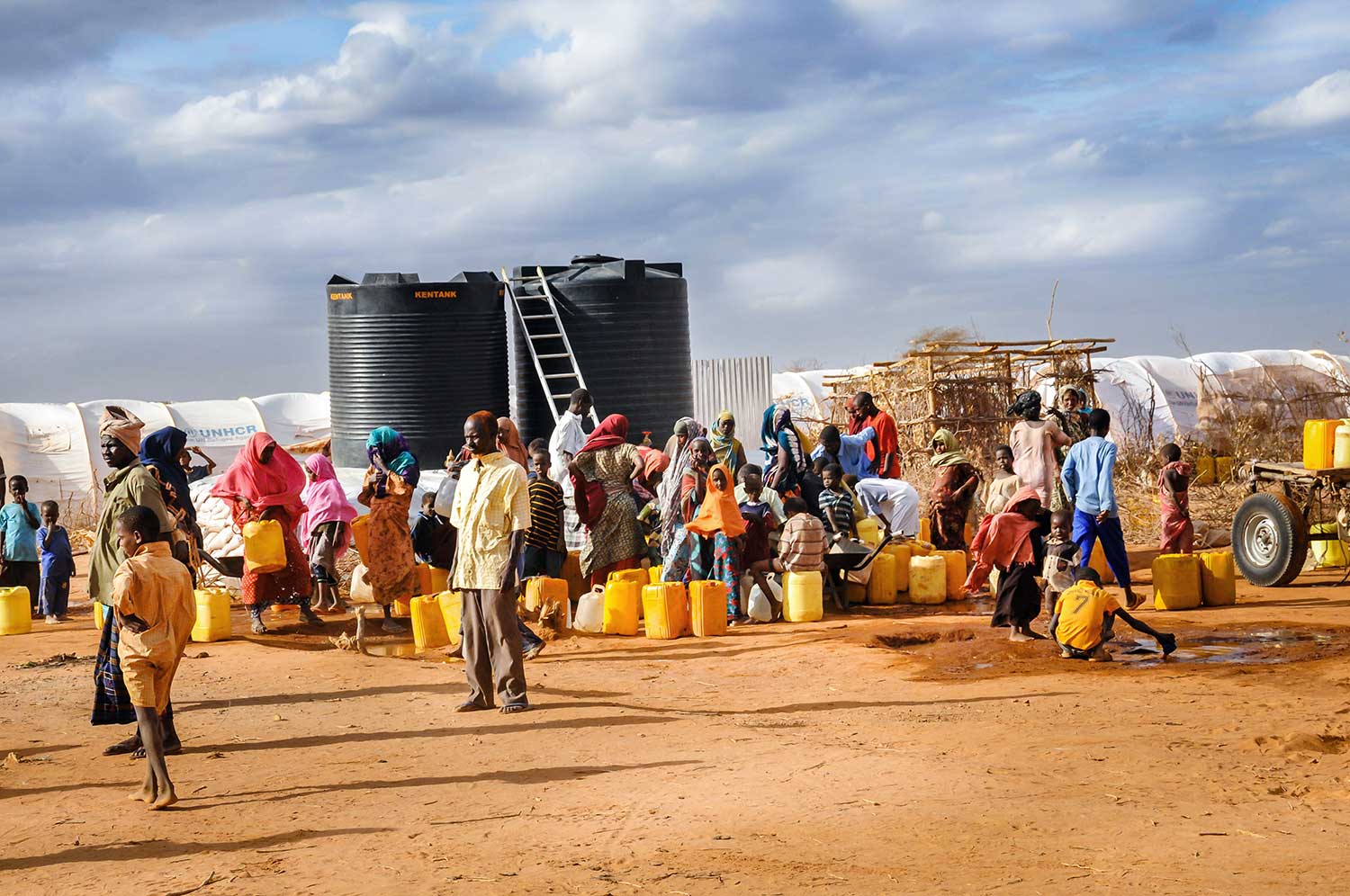Since 1990, thousands of Somalis have either left their home countries as economic migrants or fled as refugees. Most of them have spent months, if not years, in refugee camps in Kenya and other neighbouring countries.
Somalia has faced lawlessness and strife during its decades-long civil war. In Mogadishu the precipitate appointment of a USC interim government triggered a bitter feud between rival Hawiye clan factions. The forces of the two rival warlords, Gen. Maxamed Farax Caydiid (Muhammad Farah Aydid) of the Somali National Alliance (SNA) and Cali Mahdi Maxamed (Ali Mahdi Muhammad) of the Somali Salvation Alliance (SSA), tore the capital apart and battled with Siad’s regrouped clan militia, the Somali National Front, for control of the southern coast and hinterland.
This brought war and devastation to the grain-producing region between the rivers, spreading famine throughout southern Somalia. Attempts to distribute relief food were undermined by systematic looting and rake-offs by militias. In December 1992 the United States led an intervention by a multinational force of more than 35,000 troops, which imposed an uneasy peace on the principal warring clans and pushed supplies into the famine-stricken areas.
Although circumstances vary, refugees seek resettlement usually because living conditions for an individual, family, or community are too perilous or unstable to remain in the home country. Human rights violations have been documented in over 150 nations worldwide; various forms of torture are endemic in regions with the largest numbers of refugees.
As Somalia continues to experience political and economic instability, its people are increasingly living outside the country, moving from Greater Somalia primarily to the Arabian peninsula, Europe, North America, Southern Africa and Australia.
The United States began issuing visas to Somali refugees displaced by civil war in the early 1990s.
There are also small Somali populations in other pockets of Europe and Asia. The UN estimates that in 2015, approximately 2 million people from Somalia were living outside of the country’s borders. While a new government ushered in signs of progress and restoration in 2012, the country continues to face instability and threats of insurgency.
Today, Somalis are the third largest registered refugee population in the world with hundreds of thousands fleeing to save their lives. Over 870,000 Somali refugees are living across the Horn of Africa and Yemen, and an estimated 2.1 million live in protracted displacement within the country. It is estimated that over 2 million Somali refugees reside in the United States; refugees from African nations are one of the fastest growing immigrant and refugee populations in the United States. In 2019, 200,000 Somalis refugees have fled to Yemen with around 50,000 fleeing to the UAE. There are around 150,000 Somalis in Canada, 100,000 in the UK and another 85,000 in the US.
[h5p id=”316″]
However, between 1990 and 2015, the total number of people born in Somalia but living outside the country more than doubled, from about 850,000 to 2 million[Chart above]. The share of Somali migrants abroad grew 136% between 1990 and 2015, according to United Nations estimates. At the same time, the population of Somalia itself has grown less quickly at 71%, increasing from 6.3 million in 1990 to 10.8 million in 2015 [Chart below]. (The global Somali diaspora includes all migrants, both refugees and other migrants.)
[h5p id=”317″]
Consequently, there is a sizable Somali community in the United Arab Emirates. Somali-owned businesses line the streets of Deira, the Dubai city centre, with only Iranians exporting more products from the city at large. While, Ethiopia hosts 4.6 million Somalis, while Kenya has more than 2 million Somali refugees in 2019.
Since 2016, the numbers of refugees returning to Somalia from Kenya has risen to 75,000. Most have settled in the port city of Kismayo.
The growing population in Kismayo means that resources and structures are overstretched and the potential for conflict between IDPs, returnees and the local population is rising. An increasing number of people compete for the already scarce basic services and limited public infrastructure. Many Somalis have experienced a variety of traumas as a result of civil war and associated violence, famine, inadequate living conditions, and prolonged detainment in refugee camps.
The Government of Somalia has adopted a new national policy on internally displaced persons (IDPs), and refugee-returnees. The first of its kind, the policy seeks to provide rights-based solutions for the protection of all Somali citizens.
Adopted on November 14, 2019, the new National Policy, National Eviction Guidelines and the Interim Protocol on Land Distribution for Housing to Eligible Refugee-Returnees and IDPs, were developed with support from IDLO, who has been working with the Somali Federal Government and Federal Member States since 2017 to address the crisis around forced migration.
Policies were therefore needed to support the voluntary return, reintegration and protection of Somalis in stable regions of the country and to improve the protection of displaced populations.











Be First to Comment